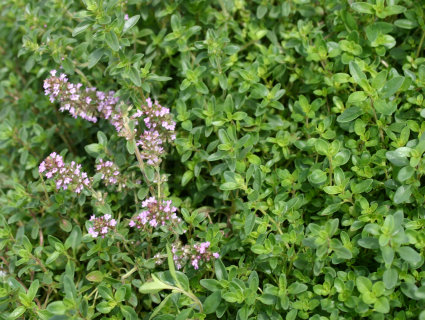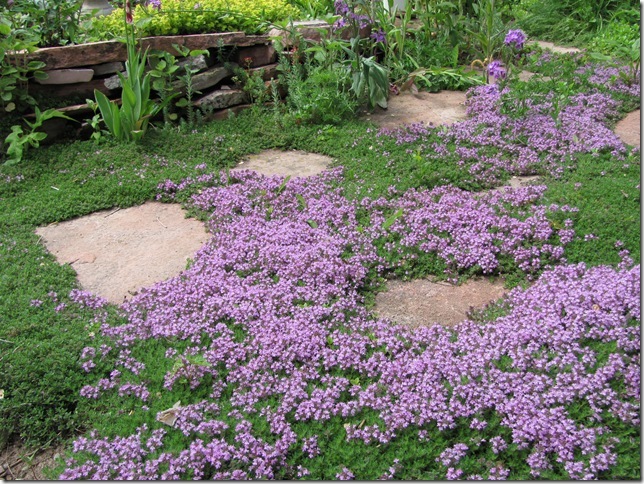
They magically attract bees and other insects.

The characteristic flowers of Thymus praecox lie directly above the dense cushions. Their colors cover the whole range from pink to carmine red. The flowers sometimes appear as early as May, in the case of the varieties usually from June to August. pseudolanuginosus), an abundantly hairy subspecies, shimmer silver-grey. The leaves of the wooly thyme (Thymus praecox var. The wintergreen leaves of the mother of thyme are oblong to inverted ovate and dark green. A square meter of scented lawn is quickly overgrown with seven plants. To the sides, however, they spread out far and form dense mats. The slightly lignifying shoots do not reach a height of more than 5 centimeters (2 in). No one can cover surfaces as beautifully as mother of thyme. Even though the aromatic herb is edible, it does not have the same importance in cooking and medicine as common thyme.

One thing is for sure, you should plant the mother of thyme as an ornamental plant. Do not be confused by the botanical back and forth. Another time they are offered as wild thyme (Thymus serpyllum), and a ‘Bressingham Seedling’ belongs to the species Thymus doerfleri. Sometimes all creeping varieties are united under Thymus praecox. The natural variation of the genus Thymus with some subspecies makes a clear assignment of garden cultivars difficult, however, especially since the dwarf forms like to interbreed. The variable wild species is hardly found in perennial nurseries. The home of the member of the mint family (Lamiaceae) is in Western Europe. The mother of thyme is also known as creeping thyme because of its mat-forming growth. The botanical name Thymus praecox already indicates that this thyme blooms “early”. W inter hardiness: hardy, USDA Plant Hardiness Zones: 6 (-20 ☌ / -5 ☏)īee and insect friendly: Yes Plant characteristics and classification of mother of thyme Plant order, origin and occurrence of mother of thyme Use in: ground cover, embankments, roof greening, group planting, planters, dry stone walls, area greening, flower garden, roof garden, heather garden, patio, Mediterranean garden, natural garden, rock garden, potted garden These information are for temperate climate! Soil quality: stony to sandy, calcipholous, moderately nutritious, low in humus Mother of thyme forms the most beautiful plant carpets.
#MOTHER OF THYME BETWEEN PRODUCE GARDEN BEDS SERIES#
You can plant thyme as a trailing container plant.Ĭity Of Allen Sustainable Landscape Series Notes: Thymes not only provide evergreen foliage in the garden, but also offer up a bounty of blooms. Cultivars with variegated leaves are available.įeatures: bushy habit fragrant, decorative foliage purple, pink or white flowers vulgaris (common thyme) forms a bushy mound of dark green leaves and purple, pink or white flowers. ‘ Lanuginosis’ (wooly thyme) is a mat-forming selection with fuzzy, gray-green leaves and pink or purple flowers. ‘ Elfin’ forms tiny, dense mounds of foliage.

serpyllum mother of thyme, creeping thyme, wild thyme) is a low-growing variety with purple flowers. Cultivars with silver- or gold-margined leaves are available. x citriodorus (lemon-scented thyme) forms a mound of lemon-scented, dark green foliage with pale pink flowers. Creeping thyme makes a good lawn substitute for areas with reduced foot traffic. Thymes work well at the front of borders, between or beside paving stones, in rock gardens, on rock walls and in containers. Once thymes finish flowering, shear them back by about one-half to encourage new growth and prevent them from becoming too woody. Do not overwater plants that sit in wet soil or receive too much irrigation will die out. It is beneficial to work compost and expanded shale into the soil. The soil should be of poor to average fertility, neutral to alkaline and very well drained.


 0 kommentar(er)
0 kommentar(er)
